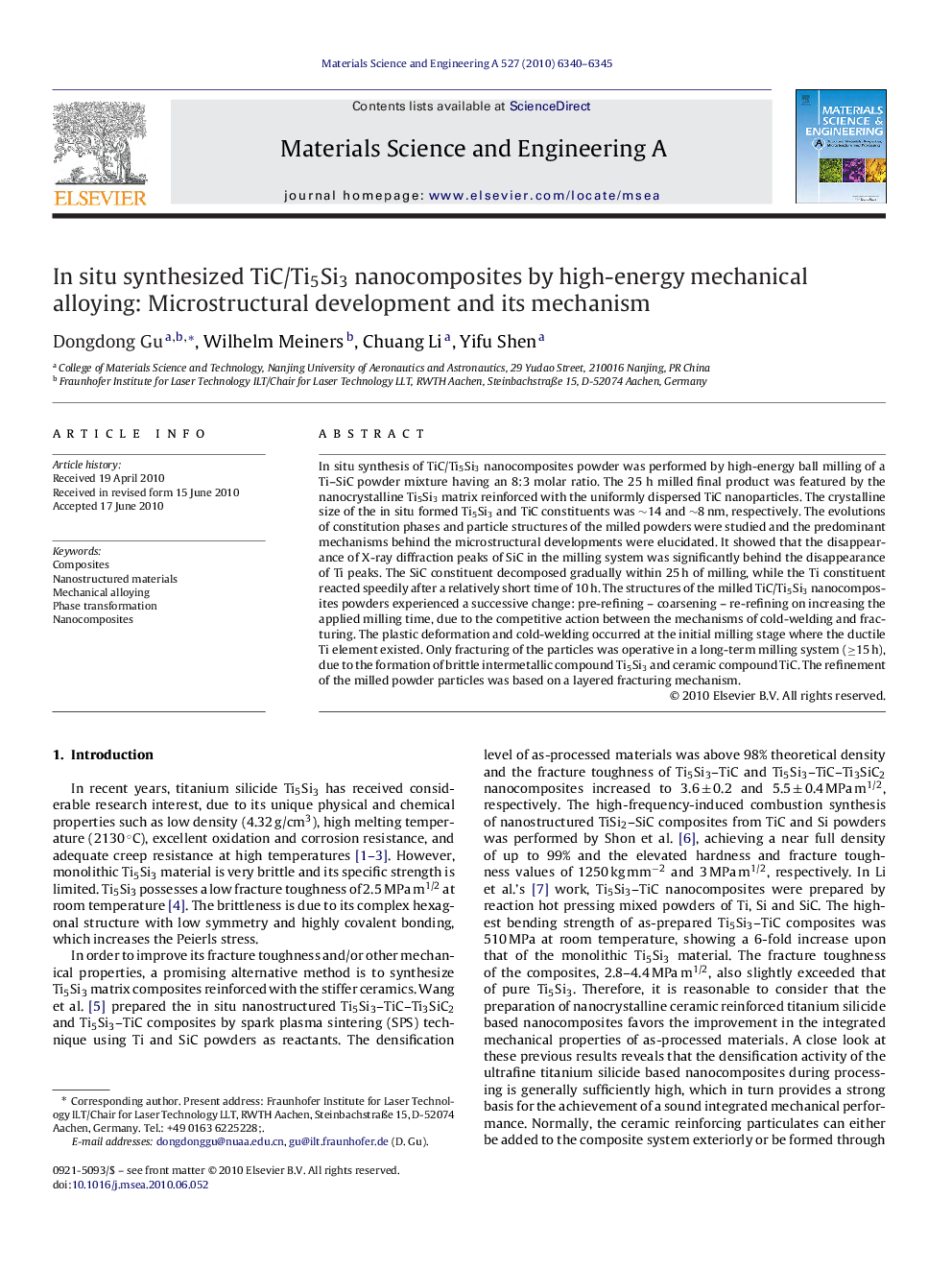| Article ID | Journal | Published Year | Pages | File Type |
|---|---|---|---|---|
| 1579006 | Materials Science and Engineering: A | 2010 | 6 Pages |
In situ synthesis of TiC/Ti5Si3 nanocomposites powder was performed by high-energy ball milling of a Ti–SiC powder mixture having an 8:3 molar ratio. The 25 h milled final product was featured by the nanocrystalline Ti5Si3 matrix reinforced with the uniformly dispersed TiC nanoparticles. The crystalline size of the in situ formed Ti5Si3 and TiC constituents was ∼14 and ∼8 nm, respectively. The evolutions of constitution phases and particle structures of the milled powders were studied and the predominant mechanisms behind the microstructural developments were elucidated. It showed that the disappearance of X-ray diffraction peaks of SiC in the milling system was significantly behind the disappearance of Ti peaks. The SiC constituent decomposed gradually within 25 h of milling, while the Ti constituent reacted speedily after a relatively short time of 10 h. The structures of the milled TiC/Ti5Si3 nanocomposites powders experienced a successive change: pre-refining – coarsening – re-refining on increasing the applied milling time, due to the competitive action between the mechanisms of cold-welding and fracturing. The plastic deformation and cold-welding occurred at the initial milling stage where the ductile Ti element existed. Only fracturing of the particles was operative in a long-term milling system (≥15 h), due to the formation of brittle intermetallic compound Ti5Si3 and ceramic compound TiC. The refinement of the milled powder particles was based on a layered fracturing mechanism.
